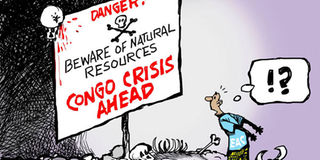Checking decline in Literacy rate is key

What you need to know:
- On the broader front, Tanzania is part of the embarrassment stemming from failure to attain the ambitious goal set by Unesco, that illiteracy should be eradicated in all member states by the year 2000.
Founding President Mwalimu Julius Nyerere was in his element as a highly focused teacher, when he spearheaded the highly spirited adult education campaign.
For it was a crucial input into the arsenal of the war against ignorance – part of the axis of the nation’s major enemies, alongside poverty and disease.
He was conscious that, as constituents of a big chunk of the population, adults, the majority of whom were peasants, livestock keepers and fishermen, had to be reasonably equipped with reading, writing and numeracy skills, to be able to function intelligently and beneficially.
A nation of illiterates could not make much, and speedy headway, so reasoned Mwalimu and his lieutenants in the campaign, ranging from volunteer primary school pupils who donated part of their spare time to instruct their elders, to policy overseers as well as co-ordinators.
The poster in which Mwalimu was depicted with eyes popping out, and a finger pointing at the viewers, was a powerful campaign tool; as was the caption ‘Wakati ni Huu’, meaning that, the matter was urgent, over which the citizens should not dilly-dally. The campaign was carried out with such zeal by learners, instructors and technical operatives, that, Tanzania soon became a model and won world-wide praise.
At independence in 1961, the illiteracy rate was 77 per cent, but by 1967, it had been reduced to 69 per cent; and by the mid-1980s, the figure had dropped to less than 10 per cent. For that reason, Tanzanians did, for many years, proudly observe International Literacy Day on September 8, from 1966.
Major components of the machinery that yielded those results included a network of co-ordinators that extended to ward level, rural libraries, rural newspapers, correspondence courses, film-based education and post-literacy classes.
Acute embarrassment
Gradually, regrettably, the campaign was weakened by initially minor problems that grew bigger, among which were: poor motivation of learners, low incentives and inadequate training of teachers, lack of materials and equipment, and lack of spectacles for learners.
Consequently, the illiteracy levels had shot up to 30 per cent in 2010; implying that, today, a relatively tiny fraction of adults are literate – a dramatic reversal of the glorious era when the country was an exemplary achiever.
On the broader front, Tanzania is part of the embarrassment stemming from failure to attain the ambitious goal set by Unesco, that illiteracy should be eradicated in all member states by the year 2000.
In the face of several problems competing for scarce financial and other resources to resolve them, the government is over stretched. Yet illiteracy is something that shouldn’t be swept under the carpet, considering, especially, that, today, unlike from a few years ago backwards, that acute embarrassment is not confined to adults but youngsters, including pupils and former pupils whose writing and reading skills are far below average.
Overall, therefore, illiteracy must be addressed as part of a broader, deeply disturbing and embarrassing education sector crisis.




